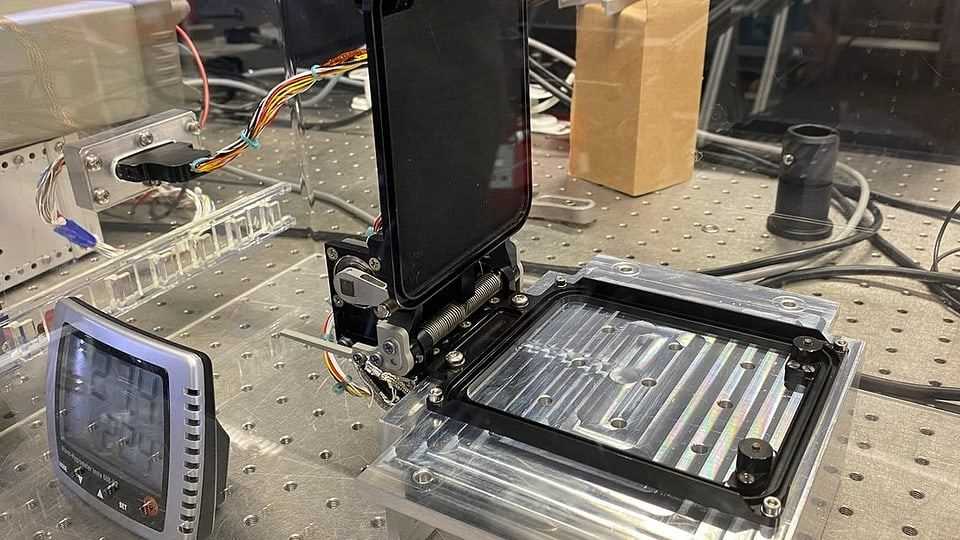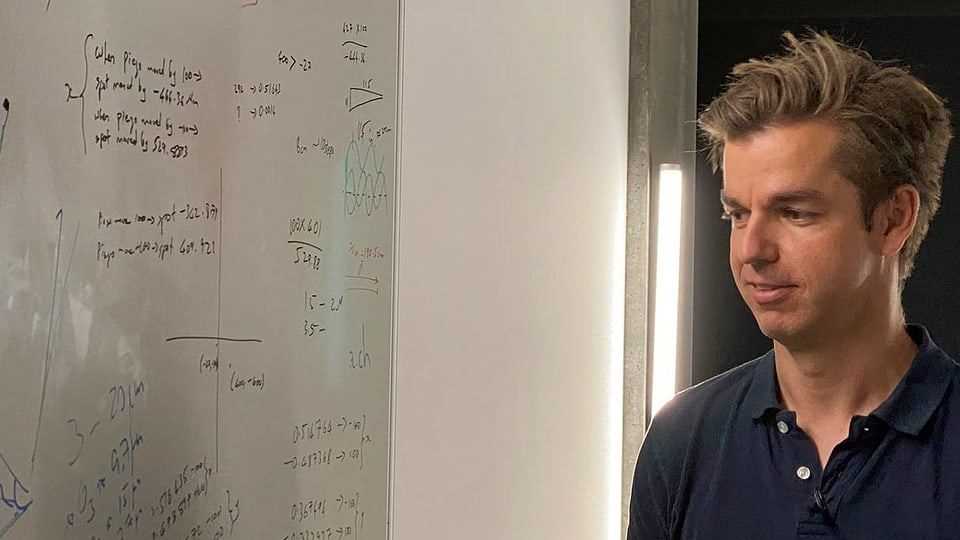contents
With the start of the James Webb Space Telescope, a dream has come true for ETH astrophysicist Adrian Glauser – but he has long been working on new goals.
“In observable astronomy, the James Webb Space Telescope is the instrument we’ve been waiting for for almost 30 years.” Adrian Glauser is sitting for an interview in a laboratory at the Institute for Particle and Astrophysics at ETH Zurich.
Next to him, in a protective case made of Plexiglas, is the technical twin of a complicated locking mechanism. It will protect one of the infrared instruments on the James Webb telescope from contamination.

Legend:
High-tech for space: the flap has to work at minus 230 degrees Celsius.
Jo Siegler
Adrian Glauser developed this closure at the very beginning of his scientific career – almost 20 years ago. Since then he has been waiting for the mission to start.
During the “commissioning phase”, when the telescope starts operating in space, he will be one of the selected scientists who are allowed to be present at the NASA control center in Baltimore: when the instrument works and produces the scientific data that researchers worldwide expect , Glauser will also be relieved: “The first pictures – that’s what I’m looking forward to most of all.” But actually “James Webb” is a thing of the past for him.
In search of the second earth
Adrian Glauser has long been working on the next generation of telescopes. In the meantime he has matured into a globally sought-after specialist in infrared telescopy and heads the technical department of his institute.
Together with his scientific director, Sascha Quanz, he is responsible for the METIS infrared measuring device on the Extremely Large Telescope (ELT) on behalf of the European Space Observatory (ESO), which is due to go into operation in the Chilean Atacama Desert in 2027.

Legend:
The “Extremely Large Telescope” will be the greatest eye humanity will focus on the sky.
ESO / L. Calçada
The ELT will have a huge mirror measuring a good 39 meters, big enough to be able to capture the infrared radiation of a comparatively small Earth-like planet. Because this, like the earth itself, orbits relatively close to a very bright sun, it would not be visible with other telescopes. The ELT will then even be able to analyze the chemical compositions of the atmospheres of distant planets.
It will also work together with the James Webb Space Telescope for this purpose. There is great hope that something will be found, but Adrian Glauser and Sascha Quanz agree: the two telescopes will not be able to determine whether something is alive on these distant planets, the resolution of the mirrors is insufficient.
Nevertheless, Glauser continues to drive this fundamental question: “Are we as humanity alone in the universe?”
Is there anybody out there?
Adrian Glauser and his scientific director Sascha Quanz are convinced: With an even better infrared telescope you can help answer this question of all questions.

Legend:
Quite classic: Sascha Quanz is brainstorming on the whiteboard how the new telescope should work.
Jo Siegler
The telescope bears the auspicious name “LIFE”: a series of several satellite telescopes that are around 1.5 million kilometers apart in space. If you connect them together, they form a huge mirror surface, so to speak.
LIFE will be the mission that will prove life on other planets for the first time.
With such a large construction one could look deeper into the atmospheres of distant planets and analyze them chemically even better. If there are indications of methane, ozone or water, then this is almost certain to be an indication of life. The two astrophysicists are convinced: “LIFE will be the mission that will prove life on other planets for the first time”.
Will Adrian Glauser still experience that? He even thinks that it won’t be that long: “I hope that one day today’s children will be able to read that, thanks to LIFE, life has been indirectly proven on an extrasolar planet.”
